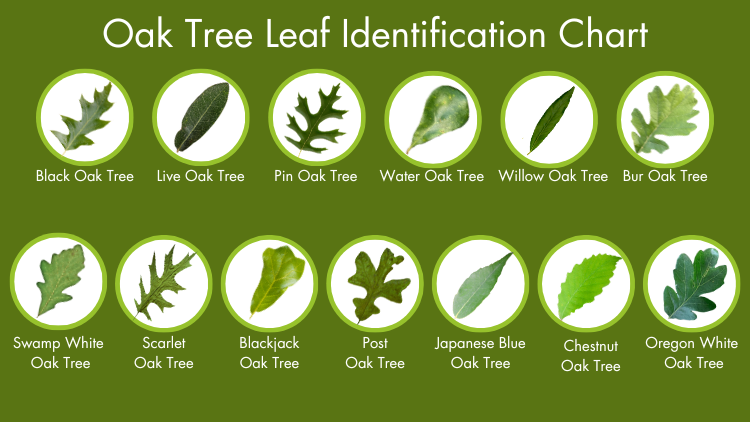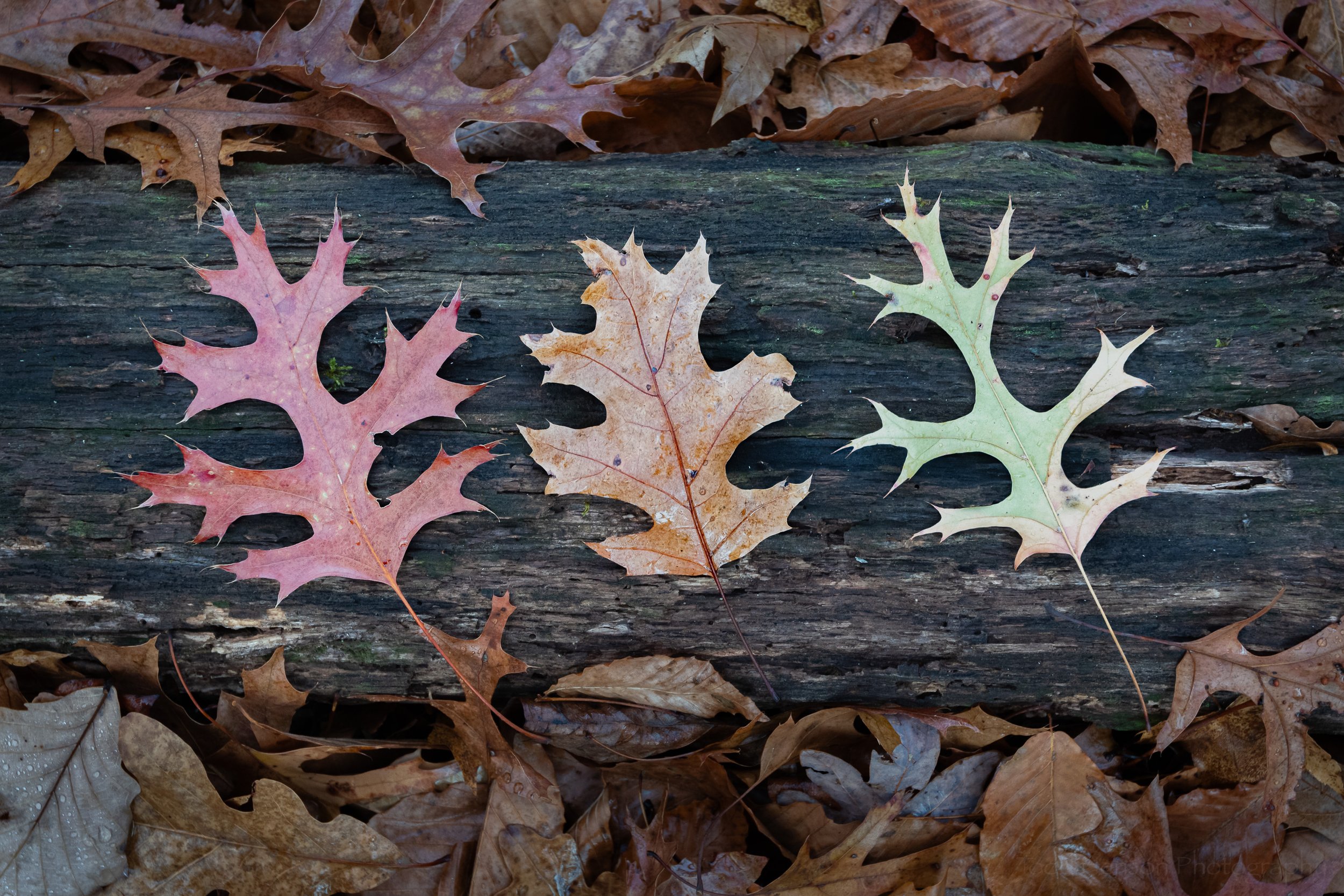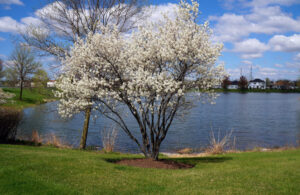Oak Tree Leaf Identification Chart: A Guide to Identifying Oak Leaves
Oak trees are among the most iconic and widespread trees in North America, known for their strength, longevity, and beauty. With over 90 species of oak in the United States alone, identifying the specific type of oak tree can sometimes be challenging. One of the most reliable ways to identify an oak species is by examining its leaves. Oak tree leaves come in a wide range of shapes, sizes, and textures, but they also share common characteristics that can help in identification.
In this article, we’ll explore the key features of oak leaves and provide an oak tree leaf identification chart to help you recognize different species of oak trees based on their leaves.

Key Features of Oak Tree Leaves
Before diving into the identification chart, it’s essential to understand the basic features of oak leaves that are used for identification. These features include:
1. Lobes:
Oak leaves often have lobes—projections or extensions that give the leaf its shape. Lobes can be rounded, pointed, or bristle-tipped depending on the species.
2. Margins:
The edge of the oak leaf, known as the margin, can be smooth or serrated. The shape of the margin plays a significant role in identifying oak species.
3. Shape:
Oak leaves vary greatly in shape. Some species have elongated, lance-like leaves, while others have wide, fan-like leaves with multiple lobes.
4. Leaf Size:
While most oak leaves are medium to large in size, some species have notably smaller or larger leaves, which can be a helpful characteristic in identification.
5. Leaf Texture and Color:
Oak leaves can have a glossy, leathery texture or a softer, more velvety surface. The color can range from bright green to deep green, and some species even have bluish or silverish tints.
Types of Oaks: White Oaks vs. Red Oaks
Oak trees are typically divided into two main groups: white oaks and red oaks. This division helps narrow down identification.
- White Oaks (Quercus section Quercus): These oak trees generally have leaves with rounded lobes. The leaves of white oaks lack bristles at the tips of the lobes. Examples of white oaks include the White Oak (Quercus alba) and the Bur Oak (Quercus macrocarpa).
- Red Oaks (Quercus section Lobatae): Red oaks tend to have leaves with pointed lobes that end in bristles. Examples of red oaks include the Northern Red Oak (Quercus rubra) and the Pin Oak (Quercus palustris).
Oak Tree Leaf Identification Chart
Here’s a chart to help you identify common oak tree species based on their leaf characteristics.
| Oak Species | Leaf Shape | Lobe Shape | Leaf Size | Other Features |
|---|---|---|---|---|
| White Oak (Quercus alba) | Broad and rounded | Rounded lobes | 5-9 inches long | Lobes deeply cut, no bristles, light green leaves |
| Northern Red Oak (Quercus rubra) | Elongated with pointed lobes | Pointed lobes with bristles | 4-8 inches long | 7-11 lobes, bristles at lobe tips, dark green leaves |
| Bur Oak (Quercus macrocarpa) | Broad with deep sinuses | Rounded lobes | 6-12 inches long | Deeply lobed, large, thick leaves, rough texture |
| Pin Oak (Quercus palustris) | Narrow with sharply pointed lobes | Pointed lobes with bristles | 3-6 inches long | 5-7 lobes, bristles at tips, shiny green leaves |
| Live Oak (Quercus virginiana) | Elliptical or oval-shaped | Smooth margins | 2-5 inches long | Leathery texture, evergreen, glossy green |
| Chestnut Oak (Quercus montana) | Long and narrow, oblong | Serrated margins | 4-8 inches long | Serrated edges, grayish-green leaves |
| Scarlet Oak (Quercus coccinea) | Deeply lobed with pointed lobes | Pointed lobes with bristles | 4-7 inches long | Bright red fall color, deeply lobed with bristles |
| Black Oak (Quercus velutina) | Lobed, similar to Northern Red Oak | Pointed lobes with bristles | 5-9 inches long | Dark green glossy leaves, bristles at tips |
| Post Oak (Quercus stellata) | Cross-shaped, thick | Rounded lobes | 4-6 inches long | Thick, leathery texture, rounded lobes, yellowish-green leaves |
| Shumard Oak (Quercus shumardii) | Deeply lobed, pointed | Pointed lobes with bristles | 4-8 inches long | Bristles at tips, bright green leaves, sharp lobes |
Detailed Overview of Common Oak Species

1. White Oak (Quercus alba)
- Leaf Shape: Broad and rounded with deep lobes.
- Lobe Shape: Rounded, no bristles.
- Other Features: The White Oak has a smooth leaf margin and deep lobes that give the leaves an iconic shape. The leaves turn a deep red or burgundy in the fall. White Oak is often found in eastern and central North America.
2. Northern Red Oak (Quercus rubra)
- Leaf Shape: Elongated with sharply pointed lobes.
- Lobe Shape: Pointed with bristles.
- Other Features: Northern Red Oak leaves have 7 to 11 lobes with bristles at the tips. This oak is one of the fastest-growing oak species and is common in the eastern U.S. The leaves turn a brilliant red in the fall.
3. Bur Oak (Quercus macrocarpa)
- Leaf Shape: Broad with deep sinuses and rounded lobes.
- Lobe Shape: Rounded, no bristles.
- Other Features: The Bur Oak leaf is large, with deep indentations and rounded lobes. This oak has one of the thickest, most robust leaves and can be found across the central and eastern U.S. It is known for its resistance to drought and fire.
4. Pin Oak (Quercus palustris)
- Leaf Shape: Narrow with sharply pointed lobes.
- Lobe Shape: Pointed with bristles.
- Other Features: The Pin Oak leaf has 5 to 7 sharply pointed lobes with bristles at the tips. It is common in the eastern and central U.S. Pin Oak is often used in landscaping due to its striking red fall foliage.
5. Live Oak (Quercus virginiana)
- Leaf Shape: Elliptical or oval-shaped, with smooth margins.
- Lobe Shape: No lobes, smooth edges.
- Other Features: Live Oak leaves are evergreen, leathery, and glossy green. Unlike other oaks, Live Oak leaves remain on the tree year-round, making it a staple of southern U.S. landscapes.
6. Scarlet Oak (Quercus coccinea)
- Leaf Shape: Deeply lobed with pointed tips.
- Lobe Shape: Pointed with bristles.
- Other Features: Known for its vibrant scarlet-red fall color, Scarlet Oak has deeply cut lobes with bristles at the tips. It’s common in the eastern U.S. and is often used as an ornamental tree.
How to Use the Oak Tree Leaf Identification Chart
The oak tree leaf identification chart is a handy reference tool for anyone interested in learning more about the different species of oak trees. To use the chart, follow these steps:
- Examine the Leaf: Look closely at the leaf’s shape, size, lobes, and margins. Identify whether the lobes are rounded or pointed, and check for any bristles at the tips.
- Compare with the Chart: Match the features you’ve observed with the descriptions in the chart. For example, if the leaf has rounded lobes and no bristles, you’re likely dealing with a white oak species. If the lobes are pointed and have bristles, it’s probably a red oak species.
- Confirm with Other Features: In addition to the leaf shape and lobes, check for other features like leaf color, texture, and size to further narrow down the identification.
Note : Oak Tree Leaf Identification Chart
Identifying oak tree species can be a fun and educational experience. With the help of this oak tree leaf identification chart, you can easily differentiate between the most common oak species by paying attention to their unique leaf characteristics. Whether you’re a nature enthusiast, a student, or a property owner trying to identify the oaks in your yard, this guide provides the knowledge needed to recognize oak trees by their leaves.
By mastering oak leaf identification, you’ll not only gain a deeper appreciation for these majestic trees but also help contribute to their conservation and management.





